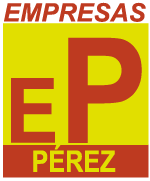In a new blog post, the world’s largest crypto exchange by volume says that it is investing an unspecified amount of money into interoperability DEX Rango. When using a DEX, there’s no need to supply personal, identifying information and trust it to be stored securely. This means your personal data is safe from bad actors who want to steal your identity.
Final Thoughts: What’s the Future of Decentralized Exchanges
The exchange will show those Bitcoins in your account, and you can trade for other tokens on the exchange. But you don’t really hold them, because you’re entrusting the exchange to act as a custodian on your behalf. Any trading you do, like swapping Bitcoin for Ethereum, aren’t occurring on a blockchain, but within the exchange’s database. A centralized exchange https://www.tokenexus.com/ such as Binance or Coinbase is a site or app where people can buy, sell, or trade cryptocurrencies and tokens listed on that exchange. DEXs represent about one percent of the cryptocurrency market’s trading volume. There’s not enough liquidity to allow for high-volume trading, and there are no centralized institutions providing market-maker services.
- See how cross-chain solutions enable a new frontier of dApp functionality.
- They provide access to a vast array of tokens, and most DEXs don’t require personal information, preserving users’ privacy.
- CEXs typically require that users place assets in their custody before trading.
- In fact, many have argued that “decentralized exchange” is an oxymoron.
- OKX Wallet Now Integrated with Blast Futures, a Perpetual Futures DEXOKX Wallet is now integrated with Blast Futures, a perpetual futures DEX.
- For newcomers, a CEX offers a more user-friendly experience and is an easier entry point.
What are the risks of using a DEX?
DEXs do the same thing but without the custodial aspect and they can offer more in the way of security and anonymity. A user can simply interact with a smart contract directly from their crypto wallet. DEXs may improve for the better as blockchain networks like Ethereum solve low transaction speeds and high transaction fees. For instance, users have to bear high gas fees when using DEXs on Ethereum.
Trade UsingReal-time andOn-chain Data!
Others counter that since all orders are published on a public ledger, there is no exclusive opportunity for any select individual to front-run from a traditional perspective. However, it has been questioned whether a miner can front-run by noticing an order before it’s confirmed and force their own order to get added to the blockchain first. By placing all stages of an order onto the blockchain, DEXs go through a time-consuming process of asking every node on the network to permanently store the order via miners, as well as pay a fee.
Pros & Cons of Trading on a Decentralized Exchange
Appropriate research can provide answers to common questions such as wallet compatibility, currency support, and which DEX is the best fit for specific needs. This does not mean that there is no difference between those DEXes and CEXes; rather, a DEX order book matches trades and does not force users to deposit funds to an in-house exchange wallet. You’ll need to first get a good grasp of how you can secure your private keys. The best and easiest way to secure your private keys is with hardware wallets, like the ones we create.
Hacks: DEX vs CEX
DEXs offer access to a wider range of token listings compared to centralized exchanges, which are often selective about the tokens they list. Trustless transactions are made possible by DEXs’ use of smart contracts to perform trades and record them to the blockchain. Furthermore, since DEXs do not deposit your assets, hackers are less likely to target them. DEXs are typically less regulated than centralized exchanges and offer features such as atomic swaps and trustless transactions. There are two main types of exchanges, centralized exchanges and decentralized exchanges. Decentralized exchanges have also grown in popularity over the past couple of years, with spot trading volume slowly shifting away from centralized exchanges, up until early 2022, when “crypto winter” set in.
- The best and easiest way to secure your private keys is with hardware wallets, like the ones we create.
- Decentralized exchanges can be a bit trickier to get the hang of, and they might not always have the assets you want.
- According to Binance, Rango currently supports over 60 digital assets, 70 DEX protocols, and 20 bridges, bringing its total volume to over $3 billion.
- To use a DEX, you only need a crypto wallet and some crypto (including enough for any gas / transaction fees).
- An AMM adheres to a strict set of rules which keeps the balance of liquidity on a DEX stable, while also taking care of pricing.
- Using a DEX requires only a wallet and some crypto to trade and pay gas fees.
The number of active crypto traders on Solana’s DEX plummeting!
Those risks often include insufficient security, technical issues, and a lack of transparency. The 0x protocol for ERC-20 and other tokens deployed on the Ethereum blockchain is a good example of this. Rather than act as a singular DEX, it provides a framework for parties known as “relayers” to manage off-chain order books. Leveraging 0x smart contracts and some other tools, hosts can tap into a combined liquidity pool and relay orders between users. Decentralized exchanges only work with cryptocurrency assets and not fiat (like USD), as enabling crypto-to-fiat would require involvement with banks. (Dollar transactions can’t settle instantly like blockchain-based ones.) Therefore, you have to already have cryptocurrency assets in order to use a decentralized exchange.
What Is a DEX? A Beginner’s Guide to Decentralized Crypto Exchanges
For others, it seems obvious that an exchange should be centralized. In fact, many have argued that “decentralized exchange” is an oxymoron. After all, an exchange is a gathering point where people congregate to trade. Of course, it should be a single entity to quickly facilitate transactions.

Leave A Comment